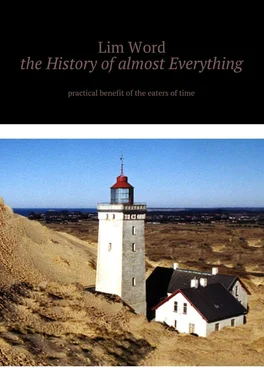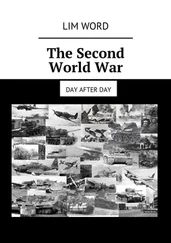6. Catherine II Alexeevna the Great, nee Sofi Augusta Frederika Anhalt-Zerbstskaya (1729—1796). Place of birth – Prussian Stettin (now Polish Szczecin). Father – Christian Augustus, a branch of the Angals House, Governor of Stettin, mother – Johanna Elizabeth, from the Gottorp House.
7. Grigory Grigoryevich Orlov, general-feldtsehmeister, favorite of Catherine II, native of the village of Lyutkino, Tver province (1734 – 1783). The unfortunate husband of the empress, the father of her illegitimate child Alexei, the ancestor of the Bobrinsky family.
8. Grigory Alexandrovich Potemkin-Tavrichesky, native of the village of Chizhovo in the Smolensk Province, general-field marshal, founder of a number of cities in Ukraine and Crimea (Dnepropetrovsk, Kherson, Sevastopol), favorite of Catherine II (1739 – 1791). The developer, in particular, of the “Greek project”, according to which the Ottoman Empire should be abolished, and its territory divided between Russia, the Holy Roman Empire and the Venetian Republic. The emperor of the revived Byzantine state was to become one of the grandchildren of Catherine, who was supposed to give the name of the founder of the capital (Constantinople) – Constantine.
Gregory Alexandrovich, the richest man in Europe, died during negotiations in Moldova, intermittent fever, at 52 years. “That’s all… nowhere to go, I’m dying! Take me out of the stroller: I want to die on the field!”.
…Between wars, Catherine is also interested in non-open, still completely uninhabited territories. In May 1764, the tsarina, consulting with the famous scientist M. Lomonosov, detach the expedition to the North Pole. The commander of the six, equipped with the most advanced equipment of the time ships – Captain first rank V. Chichagov. The expedition stops northwest of Spitsbergen (Grumant Island in the designation of Pomors), reaching a latitude of 80 degrees and five minutes, in front of insurmountable ice. The second campaign, carried out in a year, wins only one geographical minute from the North. Thus, the hope of the ambitious Lomonosov that “the ice will disperse” and by sea the Russian ships will reach the shores of North America is not justified.
Taking advantage of a pretext, the Turkish authorities conclude Russian Ambassador Obreskov in the so-called. Seven-tower castle, which, according to Ottoman custom, means the beginning of the war. In response, November 29, 1768, the war declares and Catherine II. The Russian fleet is sent to the Mediterranean Sea, under the control of the Orlov brothers; the main goal is the incitement of anti-Turkish uprisings in the midst of the conquered Christian nations by the Ottomans. Crimean Tatars cross the border of Russia and attack Novorossia – the wheel of war is crippled. The Russian detachment occupies Azov and Taganrog, begins the re-creation of the Azov flotilla. On the other flank, Golitsyn provokes the Turks, departs for two months and waits, waiting for the extraction to come to him. Indeed, the Turks come, but, because of the corruption now reigning in the Ottoman society, they are hungry, demoralized and over-inflated. In 1770 follows a series of battles, of which we especially note the battle near the Cahul River, in the south of modern Moldova. The strength of the parties: the Russian army – 32 thousand people, 118 guns, the Turkish army – 150 thousand people, with 140 guns. A detachment of Tatars in 80 thousand fighters is preparing to attack Rumyantsev’s convoys; on their protection, the commander withdraws part of the troops, leaving for a general battle of 17 thousand people. On the night of August 1, soldiers are being built in a squad of 800 men and, at dawn, move towards the Ottoman army at an accelerated pace. Turkish cavalry, as well as cavalry in general, it is difficult to attack the personnel infantry prepared for battle, besides the Russian guns under the command of the experienced Mason Melissino are extraordinarily effective. Some confusion is caused by ten thousand janissaries appearing on the flank, but, after the intervention of initiative high-ranking officers, the queen puts himself in order, and continues the offensive. A detachment of Kurds in the Ottoman army, instead of helping the Turks, is taken to rob them mercilessly. The next day the Russian detachment attacks the crossing of the Danube, where, in complete disorder, on 300 ships, the remnants of the Turkish army are trying to evacuate. Losses of the parties: the Turkish army – “according to a moderate account” 8 thousand people, 140 guns, 4 thousand prisoners, the Russian army – 364 people.
Further, on August 5, almost without resistance, for the first time the strategically important fortress Ishmael was taken. Problems with the supply of provisions, the establishment of comprehensive relations with the allies are in the past, the army remains to winter in Moldavia and Wallachia.
The Russian fleet passes from the Baltic Sea to the Mediterranean, losing about 40% of the materiel due to leaks and other incidents. For the occupation of Turkish fortified points, along with the Greek insurgents, landings are landed; in the beginning successfully, but, after the Greeks are cruelly cracking down on the prisoners, – no longer. In addition, at the head of a formally divided fleet, there are at once two equal in the status of an admiral, which can not but cause friction between them. Favorite Catherine, A. Orlov appears between them as a powerful arbitrator. Nevertheless, after a warm-up clash in the Chios Strait, where the losses of the parties are approximately equal, the battle of Chesme takes place. It develops simply: after a powerful artillery preparation, the Russians release four fire-ships against the Turkish fleet that has crowded into the bay. With two torpedo ships, the crew escapes on boats too early, at random, the third vessel stranded near the shore battery, preventing it from aiming. The fourth “torpedo” adheres to the battleship, lights it and, a few minutes after the team leaves the fire, explodes. The wreckage falls on other Turkish ships, causing a fiery storm. Burn, go to the bottom of 14 Turkish battleships, 6 frigates, a large number of small ships. Of the 15,000 Turkish sailors, 4,000 are being saved. The Russian fleet controls the entire Aegean Sea. The blockade of the Dardanelles begins – a series of straits between the islands off the western coast of Turkey; the main goal, in the future – the siege of Constantinople. Russian citizenship takes 27 islands of the Aegean Archipelago. The fleet number reaches 50 pennants. On August 5, 1773, the Russian squadron began the siege of Beirut (then belonging to Syria). In two months the city capitulates, it is passed on to the new allies, who have accepted Russia’s patronage. At the same time, 200,000 piastres of indemnity, according to the Sea Charter (the correct war!) are distributed between the ship’s crews.
In July 1774, Kyuchuk-Kainarji (a place in present-day Bulgaria) is a peace treaty. In comparison with the military successes of the Russian army, as well as the money spent, it is very modest: Russia acquires Kerch and part of the northern coast of the Crimea, with the right of navigation in the Black and Mediterranean seas (unobstructed passage through the Bosporus and the Dardanelles) rubles indemnities. The Crimean Khanate becomes independent of Turkey, with a number of territories, including the fortress Ochakov, remain in the possession of the Porte. The population of the Dardanelles, Greeks and Albanians who accepted Russian citizenship has to be taken out on a dozen vessels to Kerch and St. Petersburg. In 1778, Alexander Suvorov organizes the resettlement from the Crimea to the Azov Sea 30 thousand Christians being persecuted.
The funds for the expedition are truly enormous. Catherine II, for the first time in the history of the Russian state, turns to external loans, generating an impressive external debt, which exceeds in many times the annual budget. Practically as always, inflating the territories (which in itself is not bad) and increasing the international authority of the monarch, does not bring any improvement to the life of the indigenous population. The cost of bread increases, in fact, and not at the rate of new paper money, 4—6 times, farmers often starve and, slowly but surely, become enslaved. Hundreds of thousands of state, virtually free peasants, are transferred by Catherine II into the possession of favorites, are sold, become real slaves.
Читать дальше












